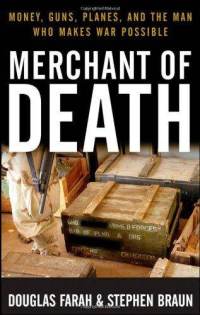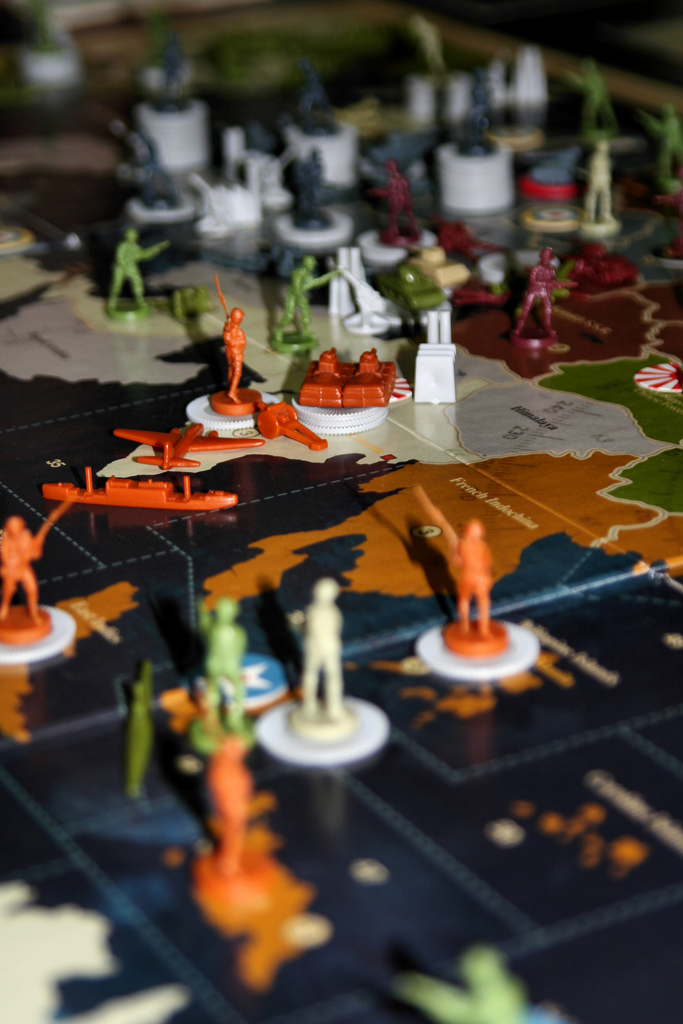Merchant of Death: Money, Guns, Planes and the Man Who Makes War Possible provides the reader with a unique insight into the growth of the globalized arms trade in the context of the collapsing post-Cold War world order. A collaboration of investigative expertise from former West African bureau chief of the Washington Post, Douglas Farah, and Pulitzer Prize-winning correspondent for the Los Angeles Times, Stephen Braun, Merchant of Death follows the career of the “poster child of transnational threats,” Russian gunrunner Victor Bout. A Russian ex-Soviet military official with alleged ties to the secretive Soviet military intelligence organization GRU, Bout’s personal history remains largely a mystery. Described ironically by one U.S. official as “sort of like Jesus, [appearing] on the scene miraculously as a full blown character,” Bout emerged from the chaos of the collapsed Soviet Union to become the world’s most notorious arms dealer.
The sudden dissolution of one of the world’s greatest military powers unintentionally created the perfect climate for the inception and rapid expansion of illicit globalized arm trade. Soviet military officials, without a clear chain of command, were supervising warehouses full of weapons and ammunition. Those armaments were waiting to be proliferated through well-established weapons pipelines from Russia to former Soviet-backed Third World clients. This gave rise to a gap between supply and demand that needed only a cash influx and the means to transport massive weapon shipments to be filled.
Seeing an opportunity to profit, Bout acquired the cash and means to bridge this gap. Just as Soviet weapons sat unused in warehouses, Soviet cargo planes were grounded on runways throughout the former Soviet Union. Leveraging his military connections, Viktor Bout cheaply purchased idle and abandoned planes, accumulating the world’s largest fleet of vintage Soviet cargo planes. These planes served as the foundation upon which Bout built his extraordinarily lucrative global transport network. This network proved instrumental in fueling conflicts throughout Africa, Latin America, and the Middle East.
Without the ideological loyalties that characterized behavior in the Cold War, Bout exploited the lack of international aviation and arms regulation to forge business relationships with anyone who would pay, often reaping profit at the expense of massive human suffering. Bout claimed that, because his planes sometimes carried legal cargo and were occasionally contracted by legitimate corporations and governments–including the U.S. government–he ran a legitimate transport company. But these claims were undermined by evidence that his network bypassed unenforceable UN embargos to supply armed groups ranging from the RUF rebels in Sierra Leone to the Taliban in Afghanistan. In the Congo, Bout’s ingenuity and lack of moral inhibitions were exhibited when investigations showed that Bout’s planes had carried humanitarian aid for the UN, weapons cargo for rebel groups fighting the Mobutu government, and Mobutu himself when the ousted president fled the country. In the words of Farah and Braun, Bout’s operation was the “quintessential symbol of the unforeseen perils of the new age—stateless rogue organizations that offered material support to any armed camp willing to pay for their services”.
In the context of the international community’s recent failure to negotiate a binding Arms Trade Treaty, Merchant of Death stands as a challenge to the lack of international action against the illicit arms trade fueling deadly conflicts in the world’s most unstable regions. Using the case of Viktor Bout as an accessible entry point, the authors reveal the national and human security threats resulting from illicit globalized arms. In doing so, they address an aspect of transnational crime that has typically received less attention than the highly politicized international threats of terrorism or drug trafficking.
Relying heavily on interviews with intelligence and diplomatic personnel, individuals and activists dedicated to tracking Bout’s activities, Bout’s personal acquaintances and business associates, and Bout himself, Merchant of Death reads like a thriller with Bout as the enigmatic villain. Aided by personal accounts, the authors bring to life each character playing a role in Bout’s story, detailing everything from the physical appearances of the dedicated individuals obsessed with bringing Bout to justice, to the habits enjoyed by the brutal warlords with whom Bout shared intimate relationships and traded weapons for gems or cash. While always maintaining investigative integrity, the authors provide readers with an exciting narrative that lives up to the promise of a title like Merchant of Death by tackling a violent and amoral story while refusing to shy away from making ethical judgments. Farah and Braun’s engaging descriptive method serves to broaden the readership by reaching an audience that may not typically read a 300-page book on post-cold war shifting global paradigms, the danger of transnational threats, or the devastating implications of an unregulated arms trade.
However, while Merchant of Death effectively mainstreams the important and underemphasized issue of the arms trade, the narrow focus of the narrative may cause some readers to understand the book as a biography rather than an effort to personify the larger issue of globalized arms trafficking as a transnational threat. Due to the authors’ almost exclusive focus on international and U.S. policies targeting Bout specifically, the authors lose an opportunity to explicitly extend their argument regarding the effects of post-Cold War conditions and ideologies to the arms trade as a whole. The authors might more effectively advance their argument by widening the scope of their narrative to include a brief evaluation of how the conditions that shaped Bout’s success influenced the global arms trade in general. By clearly applying their conclusions about the effects of the post-Cold War order on the rise of transnational threats and international policy to the arms trade as a whole, the authors can broaden their argument and enhance the readers’ understanding of the complex issue of arms trade.
In conclusion, while Farah and Braun may have benefited from extending their designation of Viktor Bout as a “post-Cold War phenomenon, operating with clandestine ties to numerous governments but beholden to none” to the arms trade as a whole, the authors of the Merchant of Death nonetheless provide readers with an intriguing insight into the life and career of the world’s most successful arms broker. Weaving together information from a wealth of sources, Farah and Braun show us a post-Cold War world in which a variety of Soviet weapons and aircrafts are available for the taking, resource-wealthy armed groups fight in conflicts that ravage Africa and the Middle East, and men like Viktor Bout, “The Merchant of Death,” are able to capitalize on human suffering with minimal consequences. With The Merchant of Death: Money, Guns, Planes and the Man Who Makes War Possible, Farah and Braun provide a diverse audience with an unique introduction to the complex and often overlooked transnational threat of the globalized arms trade.
Kelly Grant
International Affairs ’14
Merchant of Death: Money, Guns, Planes and the Man Who Makes War Possible
(Farah, Douglas, and Braun, Stephen. John Wiley and Sons Inc, Hoboken, NJ, 2007, 308 pages)



